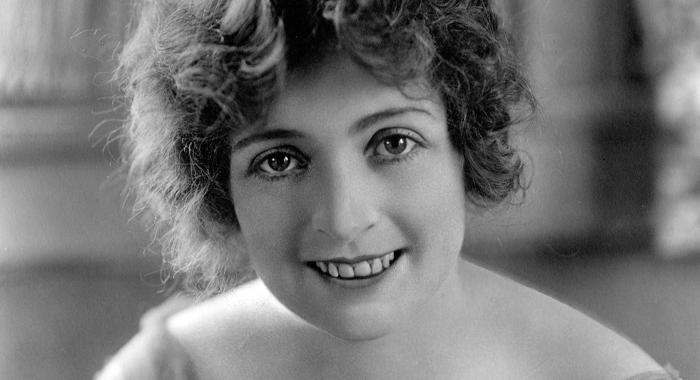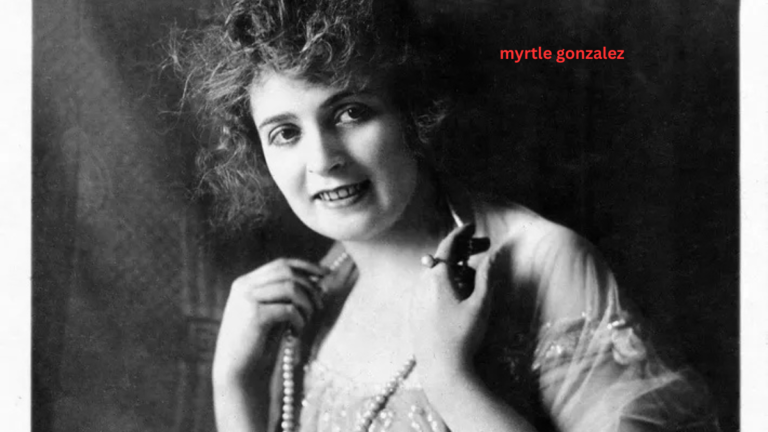Introduction: A Star Before Her Time
Myrtle Gonzalez was a pioneering figure in early Hollywood, a woman who left an indelible mark on the history of cinema. Born at a time when the film industry was still in its infancy, Gonzalez managed to make her way into the hearts of millions with her talent, charisma, and determination. As an actress during the silent film era, she was known for her striking beauty, versatility, and the unforgettable performances she delivered on screen. Despite her short career, Myrtle Gonzalez became a beloved figure in early 20th-century cinema, and her influence can still be felt in Hollywood today.
Her contributions were crucial to the early development of film as an art form, and she was among the first actresses to gain recognition in the era of silent movies. Though her career was tragically cut short by her untimely death at the young age of 27, Myrtle’s work continues to be celebrated by film historians and fans alike. This article takes a closer look at the life, career, and legacy of Myrtle Gonzalez, an actress who was ahead of her time and whose name should never be forgotten in the history of film.
Section 1: Early Life and Beginnings in Hollywood
A Humble Beginning
Myrtle Gonzalez was born on September 28, 1891, in Los Angeles, California. Growing up in a family that supported artistic endeavors, she was encouraged to pursue a career in the entertainment industry. It wasn’t long before Myrtle found herself drawn to the magic of Hollywood and the film industry, which was rapidly growing at the turn of the 20th century.
Hollywood in the early 1900s was a place of opportunity for those looking to break into the film world. At just 17 years old, Myrtle made her first appearance on screen in a small role. Her initial work was in short films, a common practice for new actresses looking to make a name for themselves. Myrtle’s beauty and natural charm soon caught the attention of producers, and her career began to flourish.
Early Film Appearances
Myrtle Gonzalez’s early film roles were mostly in low-budget productions, a reflection of the type of opportunities available to young actresses at the time. However, her talent was undeniable. She quickly moved from bit parts to more substantial roles. By the time she was in her early 20s, Gonzalez had already established herself as a promising starlet in the Hollywood scene. Her breakout role came when she starred in a number of films produced by well-known studios such as Universal Pictures.
Despite the limitations of the silent film era, Myrtle was able to captivate audiences with her expressive eyes and innate ability to convey emotion without words. Her strong screen presence was a crucial factor in her rise to fame, and it was during this time that she garnered a loyal fan following.
Section 2: The Rise to Stardom
Universal Pictures and Major Roles
By the time Myrtle Gonzalez was in her mid-20s, she had become one of the most sought-after actresses in Hollywood. Her popularity skyrocketed after signing with Universal Pictures, one of the major studios of the time. At Universal, she was given more prominent roles and became part of a growing list of leading ladies who were defining the industry.
One of her most notable roles was in the 1914 film The Call of the Wild, based on the famous Jack London novel. In this film, Gonzalez played opposite popular actor Jack Holt, and her performance was lauded for its depth and emotional range. The film’s success further cemented her place in Hollywood, and she began to be regarded as one of the leading actresses of her time.
An Actress of Many Talents
Myrtle Gonzalez was more than just a pretty face; she was a talented performer who could tackle a wide range of roles. From romantic leads to dramatic parts, Gonzalez demonstrated her ability to immerse herself in any character. Her acting style was natural and engaging, which allowed her to form an emotional connection with audiences. Unlike some of her contemporaries, who relied on exaggerated facial expressions to convey emotions, Myrtle used subtlety and nuance to make her characters feel real and relatable.
Her versatility did not go unnoticed, and soon she was cast in a variety of genres, from westerns to dramas to comedies. This broad range of roles helped her build a reputation as one of the most adaptable and talented actresses of the silent film era.
Section 3: The Silent Film Era and the Challenges Faced by Women in Hollywood
The World of Silent Films

The silent film era was a time of rapid change for Hollywood. Without the benefit of sound, filmmakers had to rely heavily on visual storytelling. The actors’ ability to communicate emotions through their expressions and physical movements was crucial to the success of a film. This posed a unique challenge for actresses like myrtle gonzalez, who had to master the art of silent acting.
Myrtle excelled in this environment. Her emotive performances were a testament to her understanding of the medium. Her ability to evoke powerful emotions through her eyes and body language made her stand out in the crowded Hollywood scene. However, silent films also posed a particular set of challenges for women in the industry, especially in a time when women were often relegated to certain types of roles.
The Gender Dynamics in Early Hollywood
In early Hollywood, the film industry was overwhelmingly dominated by men, both behind and in front of the camera. While actresses like Myrtle Gonzalez were able to find success, they were still largely limited to the roles that were considered appropriate for women at the time. These roles often centered on romance or domesticity, and women were frequently objectified or reduced to secondary characters.
Despite these limitations, Myrtle was able to carve out a unique niche for herself. She was able to break away from the typical roles reserved for women and take on more substantial and complex characters. While the industry was still heavily gendered, Myrtle’s success proved that women could excel in a variety of roles, paving the way for future actresses to do the same.
Section 4: Personal Life and Legacy
A Life Cut Short
Tragically, Myrtle Gonzalez’s promising career was cut short when she passed away on October 22, 1918, at the age of 27. Her death, attributed to a sudden illness, shocked Hollywood and her many fans. At the time of her death, Myrtle was at the height of her career and was set to star in several major productions. Her untimely passing left a void in the industry, and many mourned the loss of a talented and beloved actress.
While her career was short, Myrtle’s impact on Hollywood and cinema as a whole was significant. She had a unique ability to connect with audiences, and her performances are still admired by film historians today. Myrtle Gonzalez was not just a starlet of the silent film era; she was a trailblazer who helped shape the early days of Hollywood.
The Legacy of Myrtle Gonzalez
Despite her short life and career, Myrtle Gonzalez’s legacy continues to live on in the annals of film history. Her performances in early films helped establish the foundation for future actresses and paved the way for women in Hollywood to take on more diverse and complex roles. Myrtle’s influence can still be seen in contemporary films, where actresses are expected to bring depth and emotion to their characters, much like she did during the silent film era.
Her contributions to cinema may not have been fully recognized during her lifetime, but in the years since her passing, Myrtle Gonzalez’s work has been appreciated for its artistic merit and historical importance. Today, she is remembered as one of Hollywood’s earliest stars who helped shape the path for future generations of actors and filmmakers.
Section 5: Filmography and Key Contributions to Cinema
A Look at Myrtle Gonzalez’s Film Roles
Though Myrtle Gonzalez’s filmography was relatively short, her work remains a key part of the silent film era’s rich history. Some of her most significant roles include:
- The Call of the Wild (1914): As mentioned earlier, this film was one of her most prominent roles, where she showcased her acting talent opposite Jack Holt.
- The Snare (1916): In this drama, Gonzalez’s performance was praised for its depth and ability to convey emotion in a non-verbal medium.
- The Forbidden Woman (1917): A more daring and unconventional role for Myrtle, this film pushed the boundaries of the types of characters women could portray in early Hollywood.
Each of these films demonstrated Myrtle’s ability to adapt to different genres and styles, further cementing her place as a talented and versatile actress in the history of cinema.
Conclusion: The Unforgettable Impact of Myrtle Gonzalez
Myrtle Gonzalez’s career in Hollywood may have been short, but her impact on early cinema is undeniable. As a pioneering figure in the silent film era, she helped pave the way for future generations of actresses and filmmakers. Though she tragically passed away at a young age, her legacy lives on in the history of Hollywood. Myrtle Gonzalez remains a symbol of talent, perseverance, and grace, and her name will forever be associated with the golden age of early cinema.


